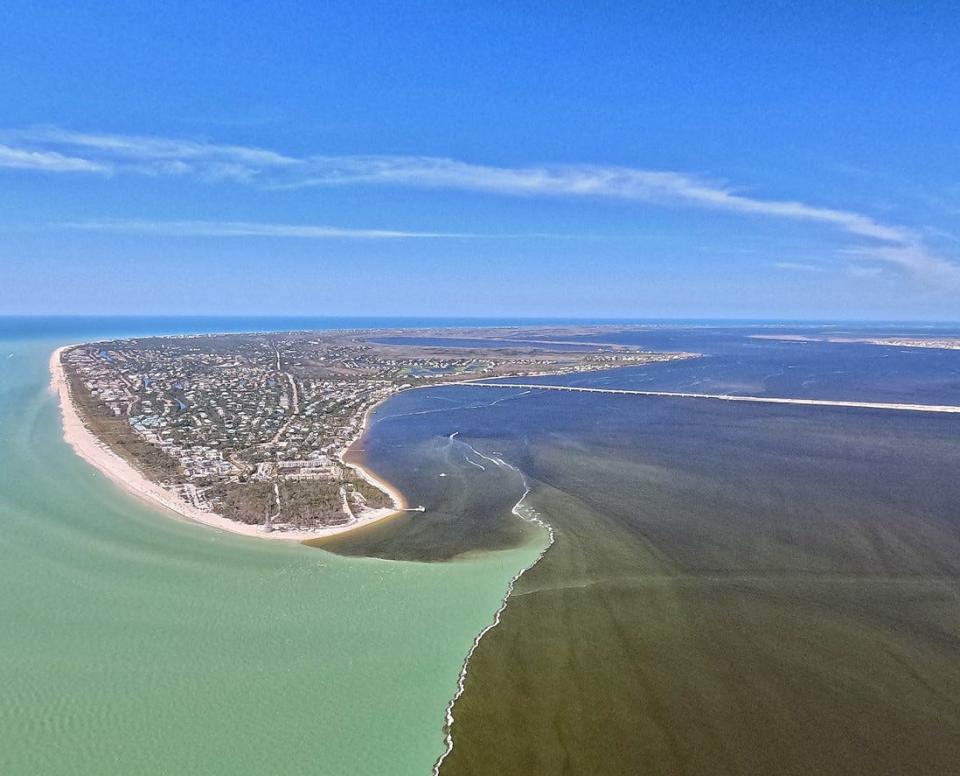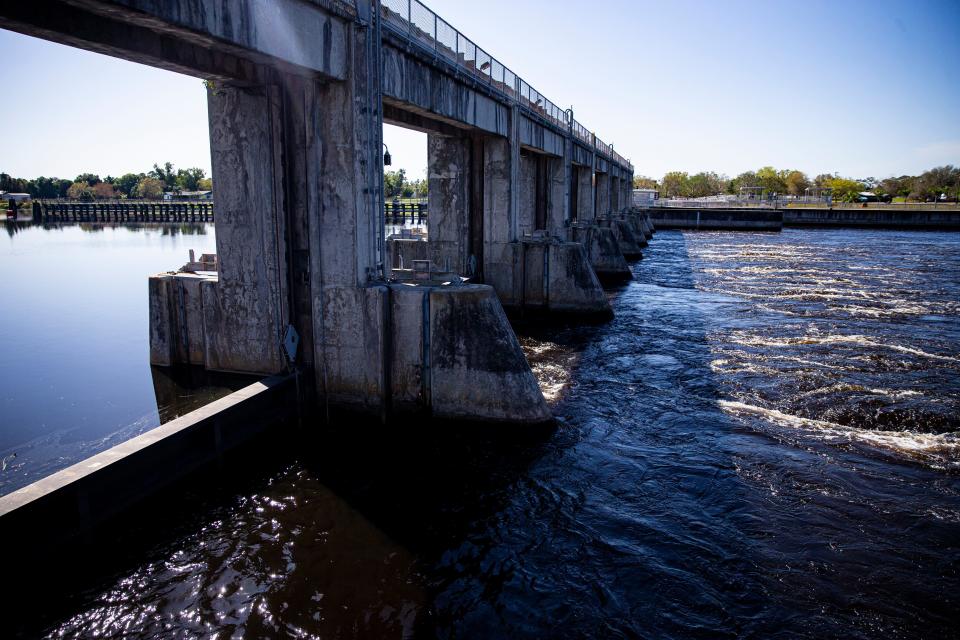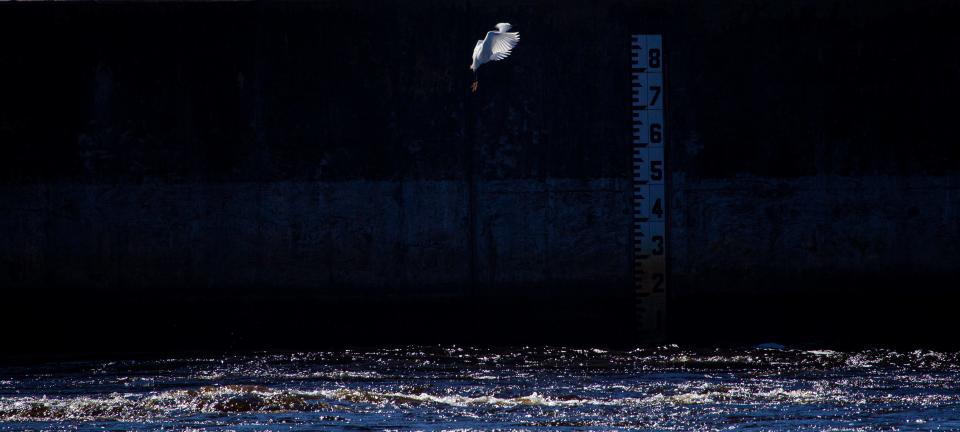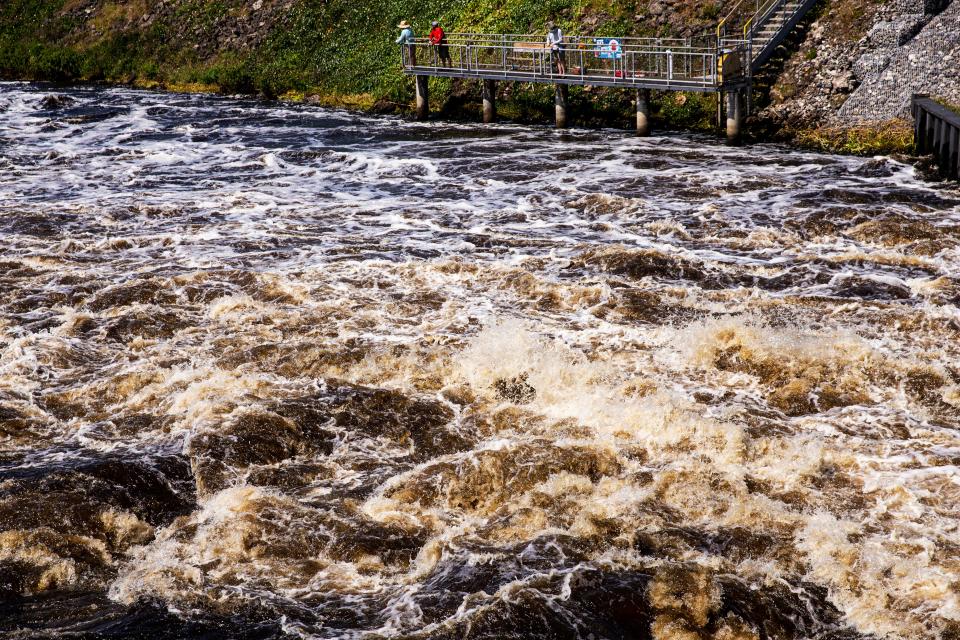Brown water near the coast: Lake O releases ongoing, could last until May
Lake Okeechobee waters continue to blast out of the W.P. Franklin Lock and Dam, and coastal Southwest Florida waters are starting to look like chocolate milk.
Aerial images from volunteers with Calusa Waterkeeper show a stark contrast between the Gulf of Mexico waters and the billions of gallons of tainted freshwater coming from the lake.
The U.S. Army Corps of Engineers typically holds Friday media calls when large-scale releases are conducted, but the agency did not have any such meeting on March 1 and doesn't plan to a press meeting until March 29.
Army Corps officials Friday afternoon were unable to say exactly what flow rates will be to the west coast over the next week, which adds to the frustration of many residents and environmental groups here.

No one really knows what to expect. They just know it's coming.
"We're way outside of the harmful flow envelope for the damaging releases to the estuary," said Calusa Waterkeeper Codty Pierce. "It's what the Army Corps needs to see to lower the lake now, and we are receiving the most amount of inundation and we still don't see much water moving south. So we have to be reactive to this."
Lake Okeechobee releases, at times, cause some of the largest water quality headaches in Southwest Florida.
Some years the releases have brought devastating blue-green algae blooms to the Fort Myers-Sanibel area. Other years the releases have fed toxic red tide outbreaks.
Lake levels have been high for months
Freshwater flows can be high enough to pump water several miles offshore, and long-term releases at these volumes can harm the Caloosahatchee River's estuary and the local economy.
Lake Okeechobee levels have been high for months, with surface levels hovering around 16.1 feet above sea level Thursday, according to Army Corps records.
Since 2008, the Army Corps has worked to keep the surface of the lake between 12.5 and 15.5 feet above sea level to provide flood protection and water for urbanized areas, farms and natural systems like the Caloosahatchee.
The Army Corps is expected to adopt a new set of regulations later this year, although those plans have been delayed several times.
Flows at the W.P. Franklin Lock and Dam in Alva have been above 5,000 cubic feet per second at times, which is well above the 2,800 cubic feet per second harm threshold for the estuary.

The Franklin Lock and Dam divides the Caloosahatchee's estuary from the freshwater, upper portions of the system.
The releases have been talked about on social media platforms and in business circles.
Local business community expressing concern
John Lai, president of the Sanibel and Captiva Chamber of Commerce, said this is the worst time of year to have large, ugly releases along the coast.
"It's got us on pins and needles because we can't have the water flowing under our bridge be black instead of blue," Lai said. " We're just hoping the lake levels drop enough that these releases lower the lake enough that they can stop in May."

More: Clean Water Act ruling causes delays for local governments, developers
More: NWS: La Nina will impact tropical systems during hurricane season
Lai said he and others in the coastal business community have made their concerns known to the Army Corps and other agencies involved with water management.
"To have that much volume come down the river during our busy season is probably the worst timing we could have, especially with our business communities trying to hold on and make as much as they can these first three months," Lai said.
Pierce said he's heard of reports of blue-green algae outbreaks at Davis Boat ramp and one location upstream of the Franklin Lock and Dam.
"Initially they talked about six weeks from the 17th of February, but I'm hearing it could go all the way into May," Pierce said. "I believe we'll be going into the early end of summer on the tail end of these discharges."

Pierce said hopes the poor water quality and the attention doesn't hurt fishing guides and Realtors.
"We're concerned about how it might impact the economy," Pierce said. "We're not crying wolf here but the releasees are harmful."
Connect with this reporter: Chad Gillis on Facebook.
This article originally appeared on Fort Myers News-Press: Army Corps sending more tainted water down the Caloosahatchee River

